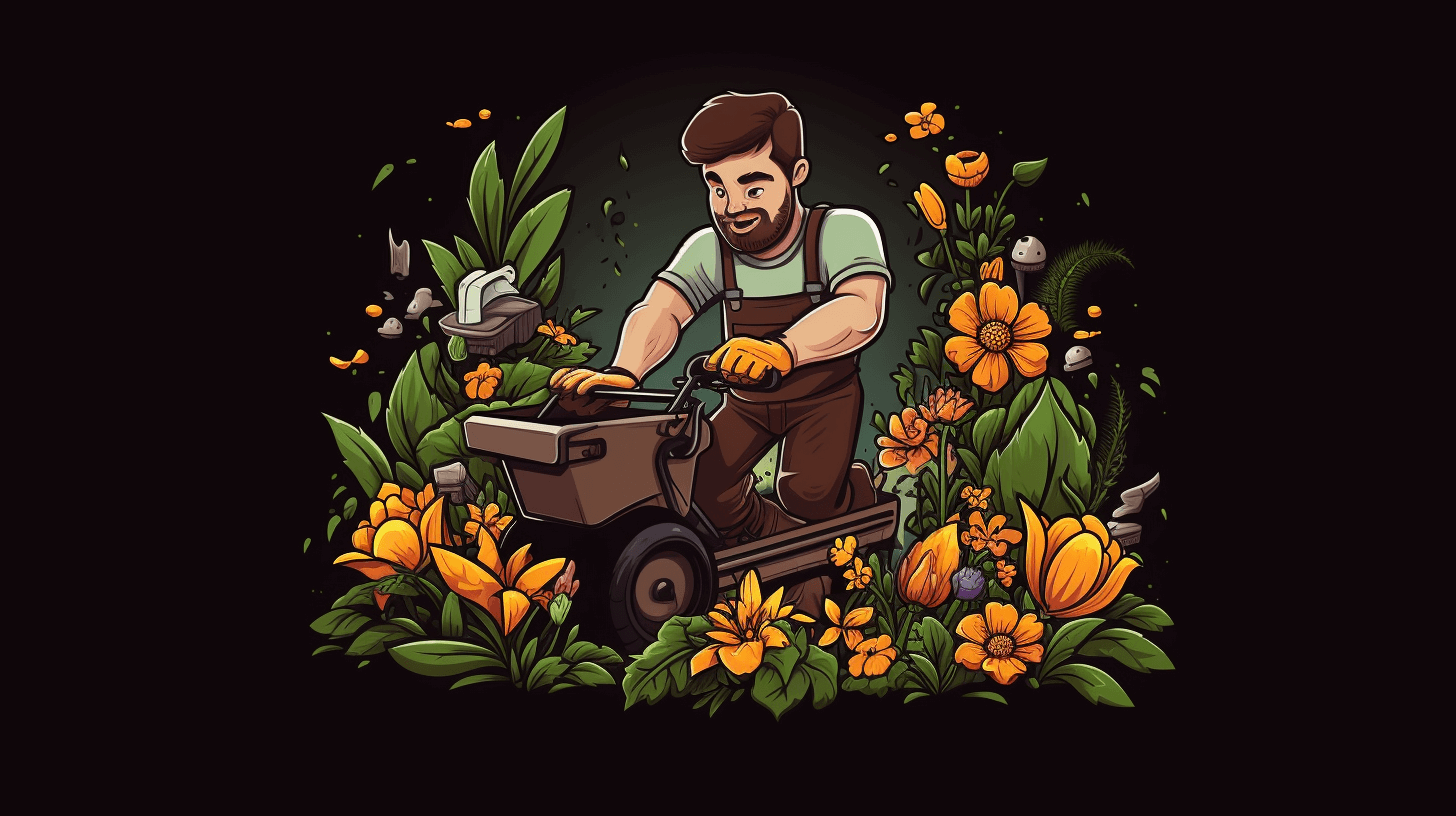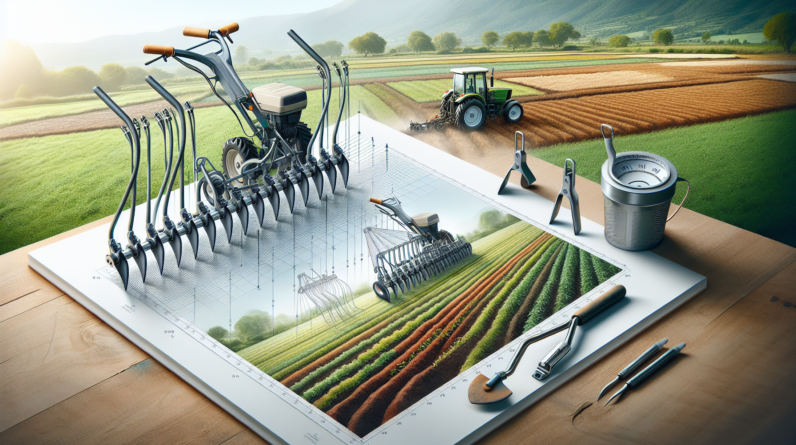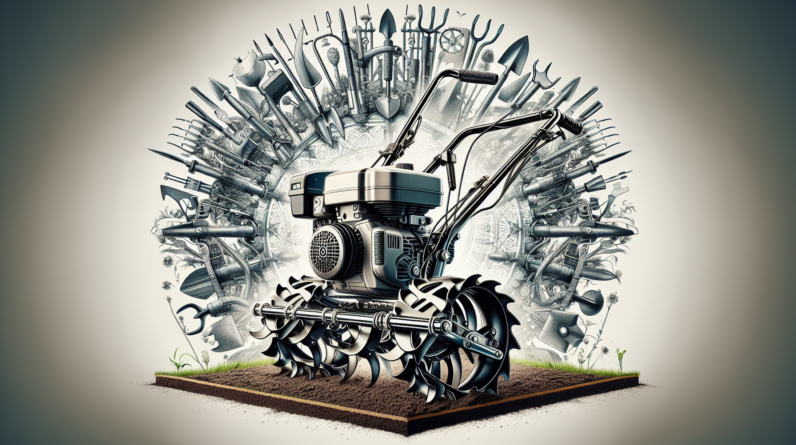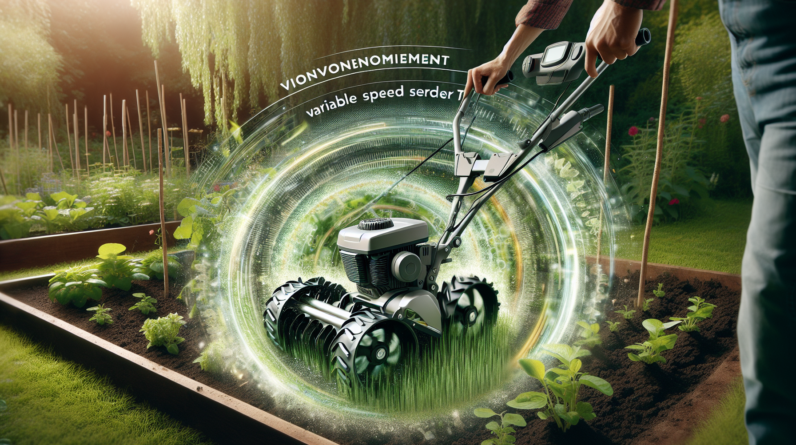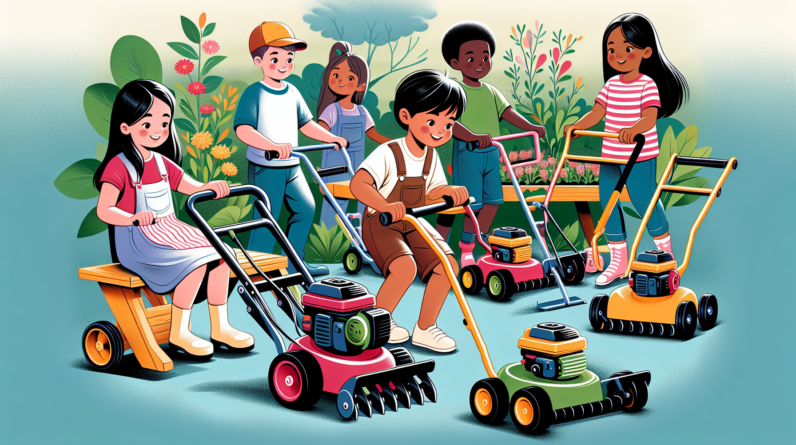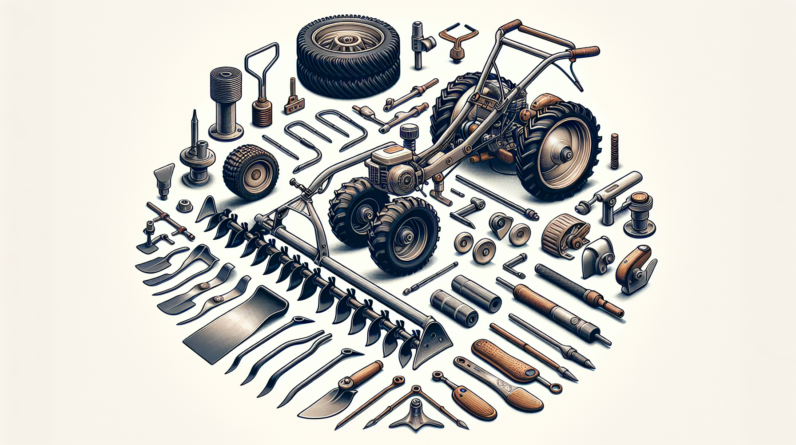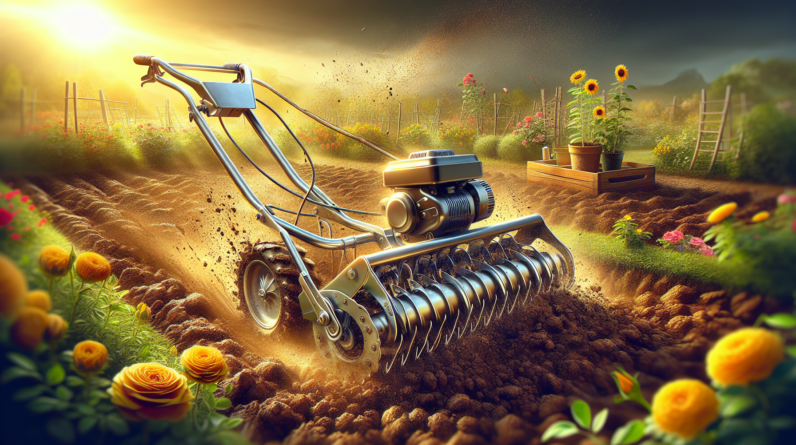
Are you struggling to cultivate your garden because of the heavy clay soil? Look no further! In this article, you will discover a range of garden tillers specially designed to tackle the challenges of clay soil. From powerful rototillers to compact cultivators, we have got you covered. Say goodbye to backbreaking manual labor and hello to a thriving garden. Whether you are a seasoned gardener or just starting out, these garden tillers will make your soil preparation a breeze. So grab your gardening gloves and let’s get to work!
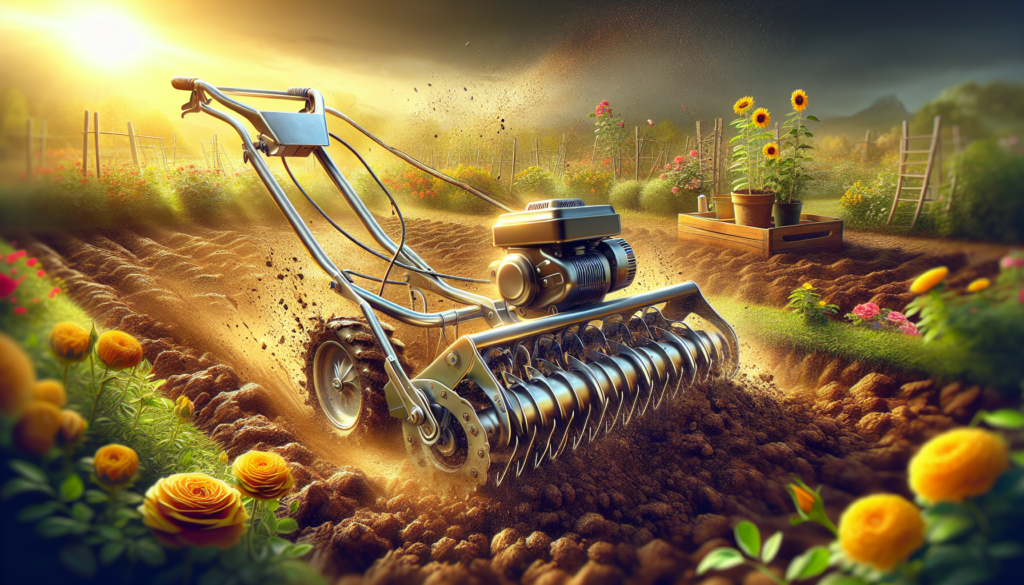
Choosing the Right Garden Tiller
When it comes to gardening, one of the most important tools you’ll need is a garden tiller. However, not all tillers are created equal, and choosing the right one for your clay soil can make all the difference. Clay soil can be heavy and compacted, making it challenging to till. But fear not! With the right considerations in mind, you can find a garden tiller that will make tilling in clay soil a breeze.
Considerations for Clay Soil
Clay soil has unique properties that can affect the performance of a garden tiller. It tends to hold water and nutrients more tightly, making it prone to compaction. Therefore, it is essential to choose a tiller that is designed specifically for clay soil. Look for tillers that have features like adjustable tilling depth, counter-rotating tines, and powerful engines to effectively break up compacted clay.
Types of Garden Tillers
There are several types of garden tillers available, each with its own set of advantages and disadvantages. rear-tine tillers are known for their power and ability to handle tough soil conditions, including clay soil. Front-tine tillers, on the other hand, are more compact and easier to maneuver in smaller spaces. Cultivators are smaller tillers designed for light gardening tasks, while garden tractors with tillers are ideal for large-scale gardening projects. Mini-tillers are the smallest and most lightweight option, perfect for smaller gardens or raised beds.
Power Source Options
Garden tillers can be powered by various sources, including gas, electric, and battery. Gas-powered tillers are generally the most powerful, making them suitable for heavy-duty tilling in clay soil. Electric tillers are quieter and more environmentally friendly, but they may lack the power needed for tough clay soil. Battery-powered tillers offer the advantage of being cordless, providing you with greater mobility and ease of use.
Budget and Size Considerations
When selecting a garden tiller, it is crucial to consider your budget and the size of your garden. Rear-tine tillers are typically more expensive but are ideal for larger gardens or those with challenging soil conditions. Front-tine tillers are more affordable and better suited for smaller gardens. Cultivators and mini-tillers are the most budget-friendly options, suitable for small garden plots or raised beds.
Ease of Use and Maneuverability
Another factor to consider when choosing a garden tiller for clay soil is ease of use and maneuverability. Look for tillers with adjustable handles and padded grips to ensure a comfortable grip during operation. Wheels with good traction will make it easier to navigate through the soil, especially in heavy clay. Additionally, consider the weight of the tiller, as a lighter machine can be more maneuverable, allowing you to tackle tight spaces more easily.
Preparing Clay Soil for Tilling
Before operating your garden tiller in clay soil, it is essential to prepare the soil properly. By taking a few steps to prepare the soil, you can ensure optimal tilling results and promote healthy plant growth.
Testing Soil pH and Nutrient Levels
Clay soil tends to have a more alkaline pH, which can affect the availability of nutrients to plants. Before tilling, it is crucial to test the soil pH to determine if any adjustments need to be made. You can use a soil testing kit, available at most garden centers, or send a soil sample to a local agricultural extension office for analysis. Based on the test results, you can then adjust the pH levels by adding amendments like lime or sulfur.
Amending Clay Soil
To improve the structure of clay soil, it is necessary to add amendments that will help break up the compacted clay and increase its drainage capabilities. Organic matter, such as compost or well-rotted manure, is an excellent amendment for clay soil. By adding organic matter, you can increase the soil’s ability to retain moisture while preventing compaction. Mix the organic matter thoroughly into the soil before tilling to ensure it is evenly distributed.
Removing Debris and Weeds
Before tilling, it is essential to remove any debris, rocks, or large clumps of soil from the area. These obstacles can potentially damage or clog the tiller tines and hinder the tilling process. Additionally, it is crucial to remove any weeds or other unwanted vegetation to prevent them from reestablishing themselves after tilling. Use a garden rake or shovel to clear the area thoroughly, ensuring a clean and well-prepped soil surface.
Moistening the Soil
Clay soil can become hard and dry, making it difficult to till. To make the tilling process more manageable, it is essential to moisten the soil before tilling. Water the area thoroughly the day before tilling to ensure the soil is adequately moist but not overly saturated. Moist soil will be easier for the tiller tines to break up, promoting smoother and more efficient tilling.
Breaking Up Compacted Clay
Now that you have prepared the soil by testing, amending, clearing, and moistening, it’s time to break up the compacted clay before tilling. This is where your garden tiller comes into action. Adjust the depth settings on the tiller according to your needs and slowly guide it through the soil. Let the tiller’s tines do the work, breaking up the compacted clay and creating a loose, friable soil texture ready for planting.
Best Garden Tillers for Clay Soil
Now that you know how to prepare your clay soil for tilling, let’s explore some of the best garden tillers available for this soil type. Whether you have a large garden or a small plot, there is a tiller out there that will suit your needs.
Rear-Tine Tillers
If you have a large garden or especially tough clay soil, a rear-tine tiller is your best option. Rear-tine tillers typically have larger engines and more power, allowing them to easily handle heavy-duty tilling tasks. Their counter-rotating tines are designed to break up tough soil, including clay, without putting excessive strain on the operator.
Front-Tine Tillers
For smaller gardens or areas with lighter clay soil, a front-tine tiller can be a great choice. Front-tine tillers are more compact and easier to maneuver, making them ideal for tight spaces. While they may not have the same amount of power as rear-tine tillers, they are still highly effective in breaking up lighter clay soil and preparing it for planting.
Cultivators
If you have a small garden plot or raised beds, a cultivator is a budget-friendly option that will get the job done. Cultivators are smaller and lighter than tillers, making them easy to handle. They are perfect for maintaining soil in between rows or for light weeding and aerating tasks. While they may struggle with heavy clay soil, they are an excellent choice for maintaining soil health in smaller gardening areas.
Garden Tractors with Tillers
If you have a large garden or a significant amount of land to till, a garden tractor with a tiller attachment can be a practical investment. Garden tractors are powerful machines that can handle a wide range of gardening tasks, including tilling tough clay soil. They are more expensive than other types of tillers but offer exceptional performance and efficiency, especially for larger-scale projects.
Mini-Tillers
If you have a small garden or raised beds and you’re looking for a lightweight and maneuverable tool, a mini-tiller is the way to go. Mini-tillers are less powerful than other types of tillers, but they are perfect for maintaining smaller gardens and working through looser clay soil. Their smaller size allows for easy storage and transportation, making them a convenient choice for those with limited space.
Top Features to Look for
When selecting a garden tiller for clay soil, there are certain features that you should pay special attention to. These features will enhance the performance and usability of your tiller, ensuring that you get the best results from your tilling efforts.
Adjustable Tilling Depth
Having the ability to adjust the tilling depth is crucial when tilling clay soil. Clay soil varies in texture and density, so being able to customize the depth settings will allow you to till at the appropriate depth for your specific needs. Look for tillers that offer multiple depth adjustments to ensure versatility and optimal tilling results.
Tine Rotation Options
Tine rotation refers to the direction in which the tiller tines spin while in operation. Forward rotation is the standard option and is suitable for most tilling tasks. However, clay soil is often compacted and requires more aggressive tilling. That’s where reverse or counter-rotating tines come in handy. They provide increased power and digging capability, making them ideal for clay soil.
Counter-Rotating Tines
Counter-rotating tines are a specific type of tine rotation that provides even greater power for breaking up tough clay soil. These tines rotate in opposite directions, effectively breaking up compacted soil and creating a loose, friable texture. If you have particularly heavy clay soil, choosing a tiller with counter-rotating tines can greatly improve your tilling experience.
Gear Drive Transmission
The transmission of a garden tiller is responsible for transferring power from the engine to the tines. Gear drive transmissions are known for their durability and ability to handle tough soil conditions. They provide more power and torque, making them an excellent choice for tilling clay soil. Look for tillers with sturdy gear drive transmissions to ensure long-lasting performance.
Easy Start Mechanism
Starting a gas-powered tiller can sometimes be challenging, especially if you have never used one before. Look for tillers with easy start mechanisms, such as a primer bulb or an automatic choke. These features make starting the tiller a breeze, saving you time and effort. Electric or battery-powered tillers eliminate the issue altogether, as they usually feature simple push-button or switch start mechanisms.
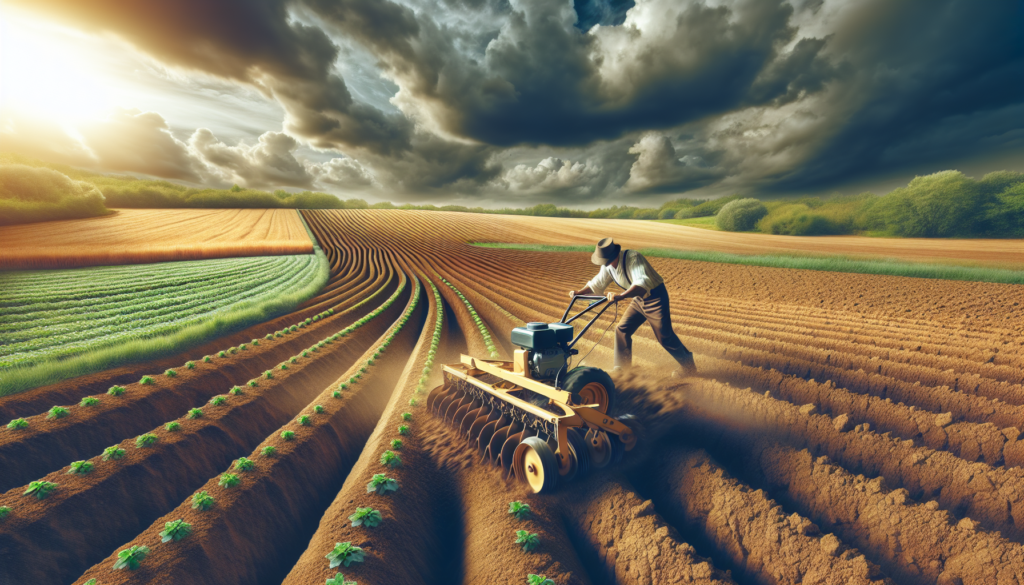
Maintenance and Safety Tips
To ensure your garden tiller remains in peak condition and to keep yourself safe during operation, regular maintenance and following safety guidelines are essential. Here are some tips to help you maintain your tiller and operate it safely.
Regular Cleaning and Lubrication
After each use, it is important to clean your tiller thoroughly. Remove any soil, debris, or plant matter from the tines, as these can cause damage or affect performance. Use a brush or scraper to remove hardened soil and rinse the tines with water. Ensure that all moving parts are well-lubricated to prevent rust and ensure smooth operation. Refer to the manufacturer’s guidelines for specific maintenance instructions.
Sharpening and Replacing Tines
Over time, the tines on your tiller may become dull or worn out, affecting their digging ability. It is important to regularly inspect the tines and sharpen or replace them as needed. Properly maintained tines will ensure efficient tilling and reduce strain on the tiller’s engine. Consult your tiller’s manual or contact the manufacturer for guidance on how to sharpen or replace the tines.
Proper Safety Precautions
When operating a garden tiller, it is important to follow proper safety precautions. Always wear appropriate protective gear, such as safety goggles, work gloves, and sturdy footwear. Avoid loose-fitting clothing that may get caught in the tiller’s moving parts. Never operate the tiller without proper supervision and keep children and pets away from the tilling area. Familiarize yourself with the tiller’s controls and safety features before use.
Storage and Winterization Tips
Proper storage and winterization are essential to prolong the life of your garden tiller. Clean the tiller thoroughly after use and make sure it is dry before storing it. Remove any excess fuel from the gas tank and run the tiller until it is out of fuel to prevent carburetor issues. Store the tiller in a dry and secure location, preferably in a shed or garage. Follow the manufacturer’s instructions for winterization procedures and consult a professional if needed.
Common Troubleshooting Issues
If you encounter any issues with your garden tiller, it is helpful to familiarize yourself with common troubleshooting problems. Some common issues include engine starting difficulties, poor tilling performance, or excessive vibration. Refer to your tiller’s manual for troubleshooting tips or contact the manufacturer for assistance. Regular maintenance and addressing small issues promptly can help prevent major problems down the road.
Additional Tools and Accessories
In addition to a quality garden tiller, there are several tools and accessories that can enhance your tilling experience and make your gardening tasks more efficient. Consider the following tools and accessories to complement your garden tiller:
Wheel Extensions for Stability
Wheel extensions attach to the tiller’s wheels, increasing its stability during operation. They help prevent the tiller from tipping over, especially when tilling on sloping terrain or uneven ground. Wheel extensions are particularly useful when tilling in clay soil, as the tiller may encounter more resistance. They provide added stability and peace of mind while tilling.
Crevice Tools for Precision
Crevice tools or attachments are designed to reach tight spaces and corners, such as between plants or along edges. These specialized tools can be attached to the tiller’s tines, allowing you to till close to existing plants, without causing damage. Crevice tools are especially useful when tilling around garden beds or in areas with intricate landscaping.
Furrowers for Seed Planting
Furrowers are attachments that create small, shallow trenches in the soil, ideal for planting seeds in rows. They are particularly useful when preparing a vegetable garden. By utilizing a furrower attachment on your tiller, you can create evenly spaced furrows, ensuring proper seed placement and optimal growing conditions.
Tine Attachments for Weed Removal
Removing weeds from your garden can be a tedious task. However, with the right tine attachments for your tiller, you can make weed removal a breeze. Weed removal attachments are designed to grab and remove weeds from the soil, eliminating the need for manual weeding. These attachments can save you time and effort, allowing you to focus on other aspects of your gardening.
Side Shields for Protection
When tilling, loose soil and debris can sometimes be thrown out to the sides. Side shields or extended tilling width attachments can help contain the debris, protecting both you and surrounding plants from being hit by loose soil. These attachments provide an added layer of protection, ensuring a safer tilling experience.
Expert Advice and Recommendations
When it comes to choosing the right garden tiller for clay soil, it can be helpful to seek advice from experts or those with experience in gardening. Here are a few ways you can gather valuable insights and recommendations:
Consulting Local Garden Experts
Local garden centers or nurseries often have knowledgeable staff who can provide valuable advice on garden tillers suitable for clay soil. Visit your nearest garden center and ask for recommendations based on your specific needs and budget. They may be able to provide hands-on demonstrations or even allow you to rent a tiller for a trial period.
Reading Consumer Reviews
To get an idea of how well a particular garden tiller performs in clay soil, read consumer reviews and testimonials. Websites and online marketplaces that sell garden tillers often feature customer reviews, which can provide valuable insights into the tilling experience. Pay attention to reviews from customers with a similar soil type to yours to gauge how well a tiller will perform in your specific conditions.
Attending Gardening Workshops
Gardening workshops or seminars are excellent opportunities to learn from experienced gardeners and professionals. These workshops often cover a wide range of topics, including soil preparation and tilling techniques. Attending such workshops can provide you with firsthand knowledge from experts and the chance to ask specific questions about garden tillers for clay soil.
Joining Online Gardening Communities
Online gardening communities and forums are great resources for connecting with fellow gardeners and enthusiasts. Joining a gardening community will allow you to ask questions, share experiences, and seek recommendations specific to clay soil and garden tillers. Gardening communities are a treasure trove of valuable information and can help you make informed decisions when purchasing a garden tiller.
Getting Recommendations from Friends or Neighbors
Another way to gather advice and recommendations is by reaching out to friends, family, or neighbors who have experience gardening in clay soil. Seek their input on the best garden tillers they have used and ask about their experiences. They may have valuable insights and firsthand knowledge that can help guide you in selecting the right tiller.
Conclusion
Choosing the right garden tiller for clay soil is crucial for successful tilling and maintaining a healthy garden. By considering factors such as soil type, tiller type, power source, budget, and ease of use, you can select a tiller that meets your needs and ensures optimal tilling results. Additionally, by properly preparing the clay soil, using the right maintenance techniques, and following safety guidelines, you can enjoy the benefits of a healthy and bountiful garden all season long.
Remember to consult expert advice, seek recommendations, and read consumer reviews to gather as much information as possible before making a purchase. Investing time and effort into selecting the right garden tiller will pay off in the long run, as it will make tilling in clay soil a breeze and set you up for gardening success.
Sources
- Expert Gardening Books
- Gardening Magazines
- Manufacturer Websites
- Gardening Blogs
- Agricultural Extension Offices
